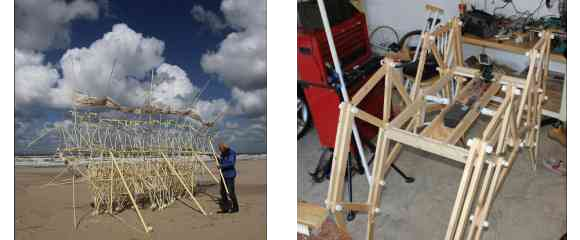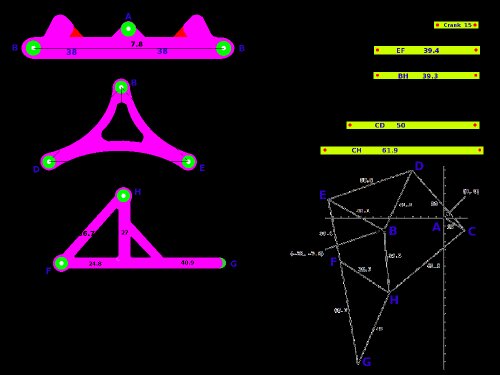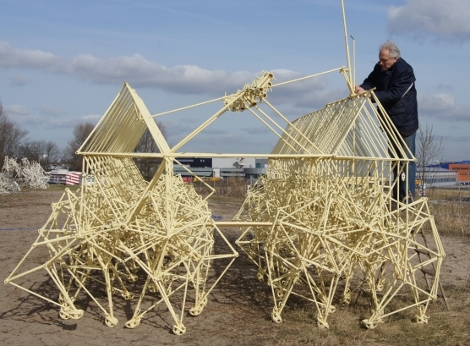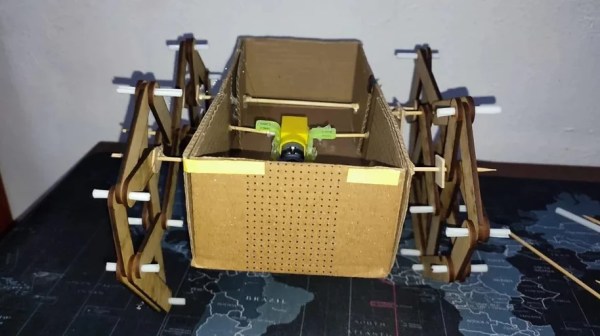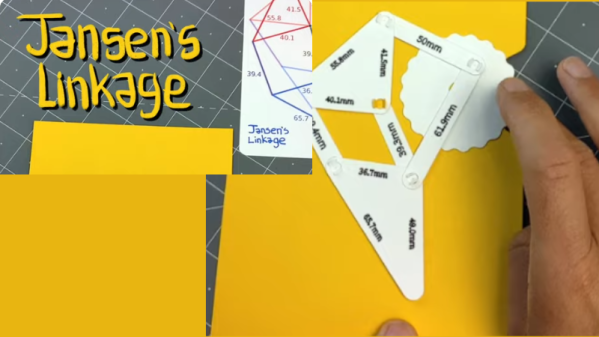[Theo Jansen] has come up with an intriguing wind-powered strandbeest which races along the beach with surprising speed and grace. According to [Jansen], it “doesn’t have hinging joints like the classical strandbeests, so they don’t get sand in their joints and you don’t have to lubricate them.” It’s called UMINAMI, which appropriately means “ocean wave” in Japanese.
There are only videos of it in action to go on so far, but a lot can be gleaned from them. To make it easier to keep track of just a single leg, we’ve slowed things down and reddened one of them in the banner animation. Those legs seem to be providing a push but the forward motion is more likely supplied by the sails. The second video below shows it being pulled along by the type of strandbeest we’re all more used to seeing.
What follows is an analysis and best guess about how it works. Or you can just enjoy its graceful undulations in the videos below.
Continue reading “Theo Jansen Invents A Faster, Simpler, Wind-Powered Strandbeest”


